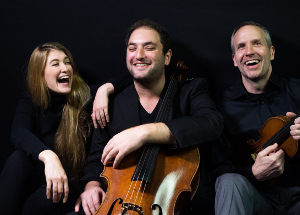On the evening of February 5, the Wilmington Symphony Orchestra performed on the campus of UNCW under the direction of Steven Errante. This concert was unique in that it featured two young soloists: cellist David Meyer and soprano Charity Whittington, winners of this year’s Richard R. Deas Student Concerto Competition.
The orchestra began with Mozart’s Symphony No. 34 in C, K.338, completed in 1780 during the composer’s final months in Salzburg. This three-movement work is less profound than his later achievements in the genre and might even qualify as a sinfonia, a predecessor of the symphony that served as an operatic overture before such works became too large for introductory purposes. The orchestra performed the symphony quite well, although the first movement could have been taken a bit faster. Observing the “vivace” part of Mozart’s tempo indication, Allegro vivace, may even have assisted the violins on the appoggiaturas of the second theme, which were not always simultaneously attacked.
In the second movement — hardly more than a chamber piece — the strings played very expressively. Aside from some intonation problems in the violins, noticeable only because of the sparse texture of the orchestration, the string section gave this movement an unexpected depth despite its simplistic structure (sonata form minus a development). The last movement, a carousing romp in 6/8, displayed the spirit that was somewhat lacking in the opening Allegro, and the oboists should be commended for their flawless duets during the finale.
Following the symphony, the audience heard the first of the two student winners. David Meyer, a high school senior, performed the first movement of Elgar’s Cello Concerto, composed in 1917. Meyer is a towering figure, standing about six-foot-six, and when he walks onstage with his instrument, one is immediately struck with how unusually small the latter appears. The Elgar Concerto is a penetrating work, and the first movement has what Errante calls a “bittersweet” quality, heightened in both key and character via its juxtaposition with Mozart on this program. One might expect the serious atmosphere of the first movement to be relatively difficult for a teenager to express, but through superb attention to dynamics and articulation, Meyer imparted an intense level of expression throughout. His technique was also notable, save for a few difficulties in places of the highest tessitura. If Meyer continues on a path toward becoming a virtuoso, we will certainly look forward to hearing him perform the Elgar concerto in its entirety at some later date.
Following intermission, Errante put the audience in the mood for opera with a brief orchestral excerpt from Puccini’s La rondine. Having an instrumental appetizer before Charity Whittington’s solo was an excellent idea, as it gave her aria a stylistic context. Immediately following the introduction, Whittington, a senior at UNCW, performed “Mi chiamano Mimì” from the first act of La bohème. She has a beautiful voice with a warm vibrato, and she sang the aria with understanding of the text and sensitivity toward phrasing. Although occasionally pushing sharp, Whittington generally had good control of her pitch, and those few lapses may have been the result of Kenan Auditorium’s acoustics. There were moments when she might have indulged in a little more rubato, but Whittington’s modest restraint was certainly in keeping with that of Mimì’s character.
The final musical event of the evening was Liszt’s “Les préludes,” his most popular work in the genre that the composer himself invented, the symphonic poem. For the orchestra, this was certainly the evening’s most demanding piece, a condensed programmatic symphony with a variety of textures and temperaments that one finds, for example, in Berlioz’s Symphonie fantastique. By and large, the orchestra performed very well and captured the ever-changing personalities of the different sections, from the hushed opening bars, to passages clearly influenced by Wagner’s Tannhäuser, to material that Mussorgsky might have studied while composing “Night on Bald Mountain.” The only major performance problem occurred during one of the more dance-like passages, when some members of the orchestra failed to keep the conductor’s tempo, causing a moment of instability before the players rallied at a downbeat. Despite this stumble, the work ended in triumph, and the brass section deserves specific credit for providing the power behind the sounds of victory in the closing section.
This performance was yet another example of how this all-volunteer orchestra demonstrates its potential. As it develops, taking on larger programs and more demanding works, the city of Wilmington will benefit greatly from having a local symphony orchestra of this caliber.












